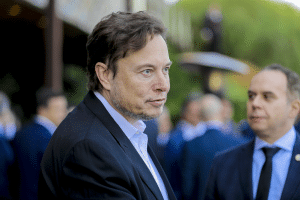- 🔋 The U.S. DOE is allocating $3 billion to counteract Chinese dominance in the EV battery market.
- 🏭 25 battery manufacturing projects in 14 states will receive funding to boost domestic production.
- 💼 The initiative aims to create high-paying jobs and strengthen economic leadership and energy security.
- 🌍 China’s CATL and LG Energy Solutions have been leading suppliers in the EV battery market.
- 💰 The investment is expected to generate $16 billion and create 12,000 jobs in production and construction.
- 📈 Companies like Albemarle, Honeywell, Dow, and Clarios Circular Solutions are among the grant recipients.
In a bold move to reshape the future of electric vehicle (EV) battery production, the U.S. Department of Energy (DOE) has announced a significant $3 billion investment to bolster domestic battery manufacturing and reduce reliance on Chinese suppliers. This strategic initiative not only aims to enhance America’s energy security but also promises a revitalization of the domestic economy by creating new jobs and strengthening the nation’s global economic standing.
Understanding the $3 Billion Investment
Aims and Objectives
The DOE’s announcement is a part of a broader strategy to fortify the United States’ battery supply chain. By directing a substantial investment towards domestic manufacturing projects, the DOE intends to:
- Counteract China’s Dominance: Given that companies like CATL and LG Energy Solutions have dominated the global battery market, primarily supplying EV manufacturers, this investment is critical. The move reflects a growing concern over energy security and the strategic importance of having a robust, localized supply chain for EV batteries.
- Promote Domestic Production: By funding 25 manufacturing projects across 14 states, the initiative seeks to position the United States as a leader in advanced battery manufacturing, decreasing dependency on imports and foreign technology.
- Create Jobs and Economic Growth: The funding is anticipated to stimulate $16 billion in total investment from private sectors and create approximately 12,000 jobs in production and construction. These jobs will not only offer high-paying opportunities but also contribute to the revival of local economies.
Beneficiaries of the Investment
A range of companies across the U.S. have been selected as recipients of the grant, including:
- Albemarle: Awarded $67 million to produce commercial quantities of anode material for next-gen lithium-ion batteries in North Carolina.
- Honeywell: Receives over $126 million for constructing a new facility in Louisiana focused on producing electrolyte salt, a key component for lithium batteries.
- Dow: Allocated $100 million to manufacture battery-grade carbonate solvents vital for lithium-ion battery electrolytes.
- Clarios Circular Solutions, in partnership with SK ON and Cosmo Chemical: Set to receive $150 million for a transformative project in South Carolina.
The Road Ahead: Implications and Challenges
Economic and Strategic Impacts
The DOE’s initiative is a crucial step in securing America’s energy independence, but it also underscores the broader implications of global economic leadership. The U.S. aims to not only catch up with but also surpass international competitors in the race for sustainable energy solutions.
Challenges to Consider
- Technological Advancements: Continuous innovation and research will be needed to ensure that U.S.-made batteries are competitive in price and performance.
- Policy and Regulatory Support: Collaboration between federal, state, and local governments will be essential to streamline regulations and encourage further investments from the private sector.
- Sustainability Goals: As the nation transitions to clean energy, sustainable production practices and recycling processes must be prioritized to minimize environmental impact.
Conclusion
The $3 billion commitment by the DOE is a monumental step towards reducing America’s reliance on foreign battery suppliers and establishing a sustainable, self-reliant energy future. As these projects progress, the potential to redefine the national and global landscape of the EV battery industry remains vast and promising.





